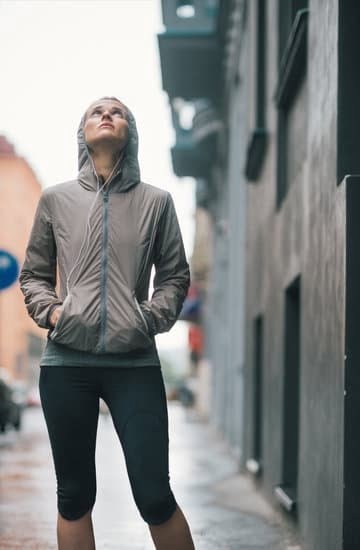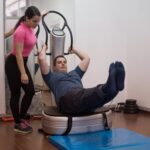Staying active and prioritizing fitness is crucial for seniors to maintain their health and well-being as they age. In this article, we will delve into the world of senior fitness exercises, focusing on the best practices for older adults looking to stay fit and active. Regular exercise not only improves physical strength and mobility but also contributes to mental sharpness and overall quality of life for seniors.
As we age, our bodies undergo various changes that can affect our muscle mass, flexibility, balance, and cardiovascular health. Engaging in a consistent fitness routine can help mitigate these effects and promote healthy aging. By incorporating a mix of strength training, cardiovascular exercises, flexibility work, balance training, and low-impact workouts into their regimen, seniors can improve their physical condition while reducing the risk of age-related issues.
This section will explore the different aspects of senior fitness exercises, offering insights into why each component is essential for older adults. From strengthening muscles to enhancing heart health to improving flexibility and balance, we will provide practical tips and examples of exercises that seniors can incorporate into their daily routine. By prioritizing their fitness and making exercise a regular part of their lifestyle, seniors can enjoy a higher quality of life and age gracefully with vitality.
Strength Training for Seniors
Strength training is an essential component of a well-rounded fitness routine for seniors. It not only helps improve muscle strength but also plays a crucial role in preventing age-related muscle loss, known as sarcopenia. Incorporating the best senior fitness exercises for strength training can significantly enhance overall physical function and quality of life.
Here are some of the best exercises for seniors to improve muscle strength:
- Squats: This exercise targets the lower body muscles, including quadriceps, hamstrings, and glutes.
- Lunges: Lunges work on leg muscles and help improve balance and coordination.
- Push-ups: A classic exercise that strengthens the chest, shoulders, and triceps.
It is important for seniors to start with light weights or resistance bands and gradually increase intensity as they get comfortable with the exercises. Proper form is key to prevent injuries and maximize the benefits of strength training. Consulting with a fitness professional or certified trainer can also help seniors design a safe and effective strength training program tailored to their individual needs.
In addition to improving muscle strength, regular strength training can also boost metabolism, promote bone health, and enhance overall functional capacity. Seniors who engage in these exercises regularly will experience greater independence and vitality as they age. Incorporating a variety of strength training exercises into their workout routine will ensure that different muscle groups are targeted for optimal results.
Cardiovascular Exercises for Seniors
Cardiovascular exercise is crucial for seniors to maintain heart health, improve circulation, and enhance overall well-being. Engaging in regular aerobic activities can also help reduce the risk of chronic diseases such as heart disease, diabetes, and stroke. Incorporating cardio exercises into a senior’s fitness routine can lead to increased endurance, better mood, and higher energy levels throughout the day.
Here are some of the best senior fitness exercises to boost cardiovascular health:
- Walking: A simple yet effective exercise that can be done anywhere, walking helps increase heart rate and strengthen leg muscles.
- Swimming: This low-impact exercise is gentle on the joints while providing a full-body workout that improves cardiovascular fitness.
- Cycling: Riding a bike can be great for seniors looking to improve their heart health and build leg strength without putting too much stress on the joints.
In addition to these exercises, participating in group fitness classes such as dance aerobics or water aerobics can add a social element to workouts, making them more enjoyable and motivating. It’s important for seniors to consult with their healthcare provider before starting any new exercise routine, especially if they have pre-existing medical conditions. By incorporating cardiovascular exercises into their fitness regimen, seniors can experience improved heart health and overall quality of life.
Flexibility and Balance Exercises
Maintaining flexibility and balance becomes increasingly crucial as we age, as these abilities play a significant role in daily activities and prevent falls, which can result in serious injuries for seniors. Incorporating flexibility and balance exercises into your fitness routine can help improve mobility, stability, and overall quality of life.
One of the best ways to enhance flexibility is through stretching exercises that target major muscle groups such as the hamstrings, quadriceps, shoulders, and back. Stretching can help increase range of motion, reduce stiffness, and alleviate joint pain in older adults.
Balance training is another essential component of senior fitness as it helps prevent falls and improves coordination. Simple exercises like standing on one leg or walking heel-to-toe can enhance proprioception (awareness of body position) and strengthen the muscles involved in maintaining balance.
Additionally, incorporating yoga or tai chi into your exercise regimen can be beneficial for improving balance, flexibility, and reducing stress levels among older adults. These mind-body practices not only focus on physical movements but also promote mindfulness and relaxation.
Incorporating a variety of flexibility and balance exercises into your weekly workout routine is key to reaping the benefits of improved mobility and stability as you age. Consistency is essential, so aim to perform these exercises at least a few times a week to see progress over time.
Remember to listen to your body and modify movements if needed to avoid injury. By prioritizing flexibility and balance training alongside strength training and cardiovascular exercises, you can support your overall health and well-being as a senior.
Low-Impact Workouts
One of the best low-impact exercises for seniors is water aerobics or swimming. These activities provide a full-body workout while being easy on the joints due to the buoyancy of water. Water aerobics can help improve cardiovascular endurance, strength, flexibility, and balance in a fun and engaging manner. Additionally, aquatic exercises can offer relief for individuals with arthritis or other joint conditions by reducing inflammation and stiffness.
Another excellent low-impact exercise option for seniors is tai chi or yoga. These mind-body practices focus on slow and controlled movements that promote strength, flexibility, balance, and relaxation. Tai chi has been shown to reduce falls in older adults by enhancing stability and coordination, while yoga can improve overall physical function and mental well-being. Both activities can be modified to suit individual needs and abilities, making them suitable for seniors of all fitness levels.
| Exercise Type | Benefits |
|---|---|
| Water Aerobics/Swimming | Improves cardiovascular health, muscle tone; gentle on joints |
| Tai Chi/Yoga | Promotes strength, flexibility, balance; enhances mental well-being |
Tips for Safe Exercise
As seniors embark on their fitness journey, it is essential to prioritize safety during exercise to prevent injury and maximize the benefits of physical activity. Following proper warm-up exercises and maintaining correct form are crucial elements in ensuring a safe workout routine for older adults.
Warm-Up Exercises
Before starting any fitness regimen, seniors should dedicate time to warm-up exercises to prepare their muscles and joints for the upcoming physical activity. Gentle movements such as arm circles, leg swings, and marching in place can help increase blood flow and flexibility, reducing the risk of strains or sprains during the workout. Incorporating dynamic stretches that mimic the actions of the exercise being performed can also help improve mobility and range of motion.
Proper Form
Maintaining proper form while exercising is key to preventing injuries and obtaining optimal results. Seniors should focus on executing each movement with control and precision, rather than rushing through repetitions. Engaging core muscles for stability, keeping joints aligned, and avoiding overextension or hyperflexion are essential components of maintaining proper form during strength training or cardiovascular exercises. Consulting with a fitness professional or personal trainer can provide guidance on correct technique tailored to individual needs.
Listening to Your Body
One of the most important aspects of exercising safely as a senior is listening to your body’s signals. If you experience pain (other than usual muscle soreness), dizziness, shortness of breath, or any other concerning symptom during physical activity, it is crucial to stop immediately and seek medical attention if needed.
Additionally, staying hydrated, taking breaks when necessary, and gradually increasing intensity can help prevent overexertion and ensure a safe workout session. Remember that consistency with best senior fitness exercises will yield better results in the long run without compromising your well-being.
Incorporating Exercise Into Daily Routine
Seniors may find it challenging to incorporate regular exercise into their daily routine, but establishing a workout routine can make it easier to stay consistent and reap the benefits of staying active. One of the best ways for seniors to prioritize fitness is by scheduling specific times for exercise each day.
Whether it’s in the morning before breakfast or in the evening after dinner, having a set time dedicated to physical activity can help create a habit and make it easier to stick to.
Setting Realistic Goals
It’s important for seniors to set realistic fitness goals that align with their abilities and health condition. Starting with achievable targets, such as walking for 20 minutes a day or doing a series of bodyweight exercises, can help build confidence and motivation. Gradually increasing the intensity and duration of workouts as progress is made will keep things challenging yet attainable.
Find an Exercise Buddy
Exercising with a friend or family member can make workouts more enjoyable and provide additional accountability. Seniors can motivate each other, offer support during challenging exercises, and have someone to share their fitness journey with. Joining group fitness classes at a local community center or gym is also a great way to meet like-minded individuals and stay socially connected while staying active.
Using Technology for Motivation
Technology can be a helpful tool for seniors looking to establish a workout routine. Fitness apps and wearable devices can track activity levels, provide workout ideas, and send reminders to stay active. Setting up alerts on smartphones or smartwatches can serve as gentle nudges to encourage seniors to get moving throughout the day. Additionally, following online workout videos tailored for older adults can add variety to exercise routines and make home workouts more engaging.
Fun and Social Fitness Activities
As older adults age, staying physically active becomes increasingly important for maintaining overall health and well-being. Engaging in fun and social fitness activities can not only provide seniors with the physical benefits of exercise but also offer opportunities for socialization and enjoyment. Participating in group fitness classes or outdoor activities can be an excellent way for seniors to stay active, make new friends, and enhance their quality of life.
One of the best senior fitness exercises that combines both fun and social elements is group dancing classes. Dance fitness classes tailored for seniors are not only great for improving cardiovascular health and flexibility but also offer a social atmosphere where participants can connect with others while moving to music. Whether it’s ballroom dancing, line dancing, or Zumba, these classes can help seniors stay active, boost their mood, and foster a sense of community.
Outdoor activities such as walking groups or hiking clubs are another fantastic option for seniors looking to stay active while enjoying nature and connecting with like-minded individuals. Walking is a low-impact exercise that can be easily modified to suit different fitness levels, making it accessible to most seniors.
By joining a walking group or hiking club, older adults can explore scenic trails, engage in stimulating conversations, and reap the physical and mental health benefits of exercising outdoors in a supportive group setting.
| Activity | Benefits |
|---|---|
| Dance Fitness Classes | Improves cardiovascular health, enhances flexibility, boosts mood, fosters community |
| Walking Groups/Hiking Clubs | Low-impact exercise, connects with nature, stimulates conversations, supports mental well-being |
Conclusion
In conclusion, incorporating regular physical activity into your routine is crucial for maintaining overall health and well-being as a senior. As discussed in this article on the best senior fitness exercises, engaging in strength training, cardiovascular exercises, flexibility and balance workouts, as well as low-impact activities can significantly improve your quality of life. These exercises not only help prevent muscle loss and improve heart health but also enhance mobility, stability, and joint health.
Prioritizing your fitness as a senior does not have to be a daunting task. By following the recommended best senior fitness exercises outlined here and implementing safe exercise practices such as warming up properly and using correct form, you can enjoy the benefits of staying physically active in a sustainable way. It is essential to make fitness a regular part of your daily routine to ensure long-term health benefits.
Remember that staying active is not just about physical health but also mental and emotional well-being. Participating in fun and social fitness activities like group classes or outdoor workouts can provide additional motivation and enjoyment. So, take the first step towards prioritizing your fitness today by incorporating these various exercises into your daily life for a healthier and more fulfilling future.
Frequently Asked Questions
What Is the Number One Exercise for Seniors?
Walking is often considered the number one exercise for seniors due to its accessibility, low impact nature, and numerous health benefits. It helps improve cardiovascular health, maintain mobility, and boost mental well-being.
What Is the Best Fitness Routine for Seniors?
The best fitness routine for seniors typically includes a combination of aerobic exercises, strength training, flexibility exercises, and balance activities. This well-rounded approach helps improve overall physical fitness, reduce the risk of falls, and promote independence in daily life.
What Exercise Should a 70 Year Old Be Doing?
A 70-year-old should focus on exercises that improve cardiovascular health, strength, flexibility, and balance. Activities like walking, swimming, light weight lifting, yoga, and Tai Chi are beneficial for maintaining overall physical well-being in older age.

Passionate about providing useful information to anyone with an interest in the field of Personal Training, I strive to pass on to our readers quality information and to answer any questions about Personal Trainers, the work they do and how to become one.





